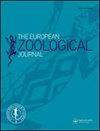Transcriptome analysis of Mesobuthus martensii revealed the differences of their toxins between females and males
IF 1.6
4区 生物学
Q2 ZOOLOGY
引用次数: 1
Abstract
Abstract Scorpion venom plays an important role in scorpion predation, competition, communication, and defense. In this study, the species identification of Shandong scorpion and the analysis of venom extracted from male and female scorpion at the transcriptome level and their activity were compared. Whole de novo transcriptomes were performed on male and female scorpions and the sequences of cytochrome c oxidase subunit I were screened to identify the species. The scorpions collected were identified as Mesobuthus martensii and we have successfully annotated 16,726 (37.47%), 10,076 (22.57%), 10,878 (24.37%), and 10,187 (22.82%) unigenes with NR, Swissport, GO and KEGG database. A total of 17 kinds of toxins and 181 toxin-related unigenes were screened. There is no accurate identification of the differences between male and female scorpions at the molecular level and these need to be further explored. The difference ratio in toxins was 6.08%, and this number in unigenes was 0.78%. There are seventeen toxins and other toxins related genes were analyzed in male and female scorpions, among which the representative phospholipase, makatoxin toxin, and plancitoxin toxin were all related to the biological functions of scorpion martensii. EF chiral domain in phospholipase: helix turn helix is related to calcium channel toxin; The QWAKYGN base sequence contained in makatoxin toxin is α-toxin specific domain; It was found in plancitoxin I toxin that it contains two deoxyribonuclease II active sites, HEK, and DHSK. Since calcium channel toxins are associated with α- toxins belong to neurotoxins. Therefore, phospholipase and makatoxin are both toxins that act on the nervous system, while plancitoxin I toxin has deoxyribonucleotidase II activity and can degrade DNA in mammals. We constructed structure analysis including sequence alignment, 3D modeling, and phylogenetic analysis in phospholipase, makatoxin, and plancitoxin. There was little difference showed in GO and KEGG analysis and the differences ratio in unigenes annotated as toxins was much higher than that in all unigenes. What’s more, the evaluation of toxin activity showed that the toxicity of female scorpion was likely to be higher than that of male scorpion. The method can be used as a useful tool to evaluate the difference between male and female animals.马氏中蟾蜍的转录组分析揭示了其毒素在雌性和雄性之间的差异
摘要蝎毒在蝎子捕食、竞争、交流和防御中起着重要作用。本研究比较了山东蝎的物种鉴定以及从雄性和雌性蝎中提取的毒液在转录组水平上的活性分析。对雄性和雌性蝎子进行了完整的从头转录组,并筛选了细胞色素c氧化酶亚基I的序列以鉴定该物种。收集到的蝎子被鉴定为马氏中蝎,我们已经成功地用NR、Swissport、GO和KEGG数据库注释了16726(37.47%)、10076(22.57%)、10878(24.37%)和10187(22.82%)个单基因。共筛选出17种毒素和181个与毒素相关的单基因。目前还没有在分子水平上准确识别雄性和雌性蝎子之间的差异,这些差异需要进一步探索。毒素差异率为6.08%,unigenes的差异率为0.78%。在雄性和雌性蝎子中分析了17个毒素和其他毒素相关基因,其中具有代表性的磷脂酶、马卡毒素和平心毒素都与马氏蝎的生物学功能有关。磷脂酶中EF手性结构域:螺旋转螺旋与钙通道毒素有关;马卡毒素QWAKYGN碱基序列为α-毒素特异性结构域;在plancitoxin I毒素中发现它含有两个脱氧核糖核酸酶II活性位点HEK和DHSK。由于钙通道毒素与α-毒素有关,因此属于神经毒素。因此,磷脂酶和马卡毒素都是作用于神经系统的毒素,而平心毒素I毒素具有脱氧核糖核苷酸酶II活性,可以降解哺乳动物的DNA。我们构建了结构分析,包括序列比对、3D建模和磷脂酶、马卡毒素和平心毒素的系统发育分析。GO和KEGG分析显示差异不大,注释为毒素的unigenes的差异率远高于所有unigenes。此外,毒素活性评估表明,雌性蝎子的毒性可能高于雄性蝎子。该方法可作为评估雄性和雌性动物之间差异的有用工具。
本文章由计算机程序翻译,如有差异,请以英文原文为准。
求助全文
约1分钟内获得全文
求助全文
来源期刊

European Zoological Journal
Agricultural and Biological Sciences-Animal Science and Zoology
CiteScore
3.10
自引率
5.60%
发文量
80
审稿时长
30 weeks
期刊介绍:
The European Zoological Journal (previously Italian Journal of Zoology) is an open access journal devoted to the study of all aspects of basic, comparative and applied protozoan and animal biology at molecular, cellular, tissue, organ, organismal, population, and community-ecosystem level. Papers covering multiple levels of organization and integrative approaches to study animal form, function, development, ecology, evolution and systematics are welcome. First established in 1930 under the name of Il Bollettino di Zoologia, the journal now has an international focus, reflected through its global editorial board, and wide author and readership.
 求助内容:
求助内容: 应助结果提醒方式:
应助结果提醒方式:


